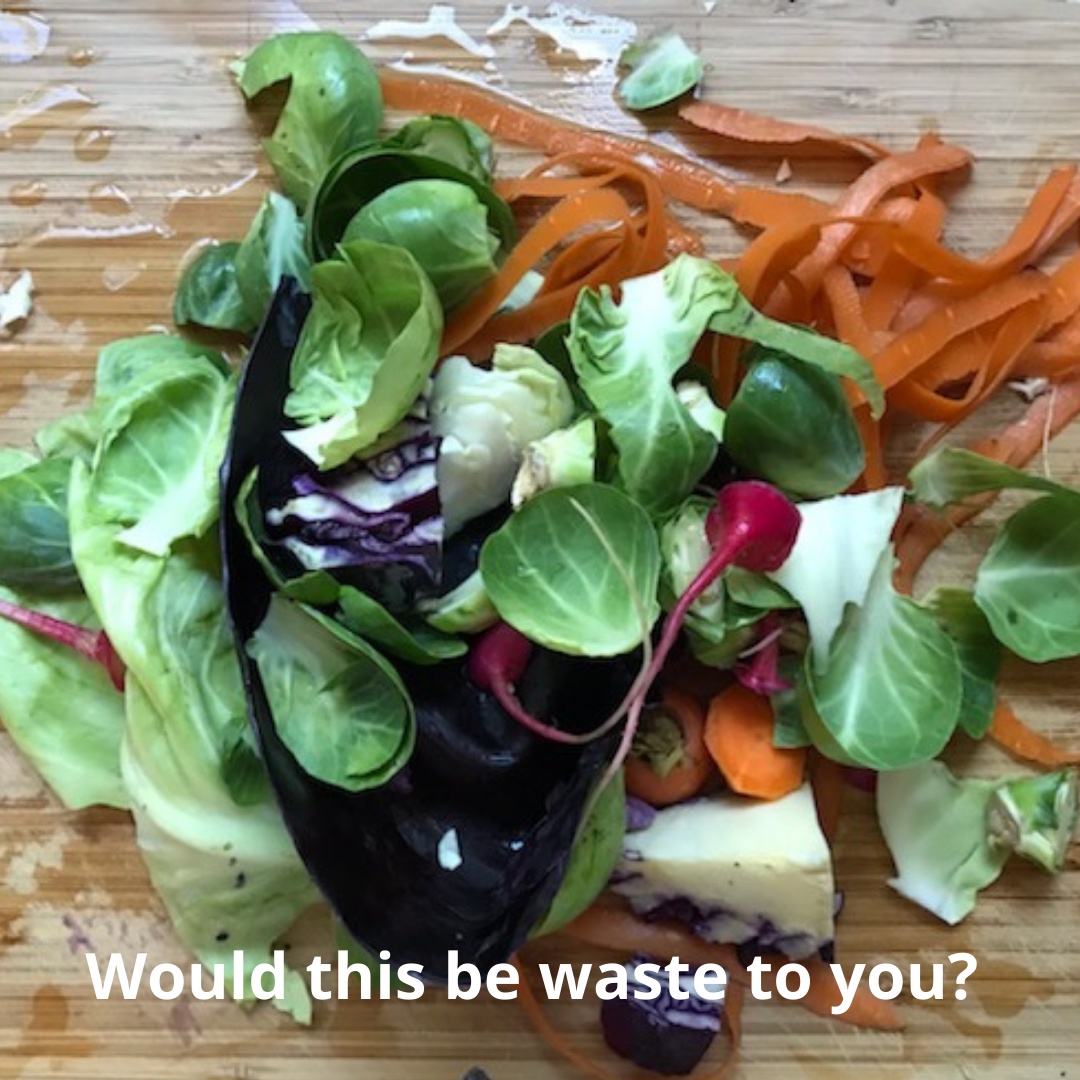|
I love getting all the fresh veggies this time of year. There is no doubt that time farm to table affects the nutrients of the foods we eat. This time of year I am are able to source fresh produce close to home vs. in the winter when my produce must come from far away. I have to admit that knowing that produce sourced in winter has a higher carbon foot print as well as less nutrients affects the choices I make. Did you know that food flash frozen within a short time from harvest contains almost the exact amount of nutrients as fresh produce? So in the winter I often look to purchase frozen produce to meet my desired nutritional needs. But it is summer and fresh produce grown locally is in abundance. The other day when I was making a delicious fresh cabbage slaw salad, I was stunned by how beautiful the waste cuttings looked. I just had to take a photo to share. Now these beautiful cuttings could go into the garbage to break down at the dump, or if my city had a program, it could go into green waste to be converted to compost, but it would be such a waste to loose those beautiful nutrients. Year round I keep a container in my freezer to put my waste cuttings in. I collect them until I am ready to make a delicious veggie broth, or better yet to use them to add flavour to an even more nutritious bone broth. Did you know that bone broth contains 9 grams of protein per cup and is an easy way to bump up your protein intake to assist with healing, cell repair and to grow new cells? I use my InstaPot to make my broths. It is quick, easy! You don’t need an InstaPot to make your broth, you could use a slow cooker or just a pot on the stove simmering away on a low heat for a couple of hours. Once the broth is finished and cooled, I strain out the spent veggie cuttings to then go into green waste or garbage. The remaining broth that holds all the vitamins and minerals spent from the frozen veggie cuttings. The broth is then used where ever I would use water in the cooking process. I use broth to make things like rice, quinoa, soups, stews, gravies and more. I usually keep a litre jar of broth in the fridge ready for use when the need arises. The excess broth goes into mason jars filled to about 2” from the top, sealed and placed on the side in my freezer to allow for expansion during the freezing process. Once frozen they are stood up and kept in my freezer door. Some of the veggies I save for broth are garlic and onion skins and cuttings, ginger skins and fibres left from grating, plus herb stems and cuttings, not to mention all the other veggie cuttings like carrot tops and peelings, potato peelings, cabbage leaves. The list is endless. Literally, just wash, drain the cuttings and of course take out any spoiled bits, then into the freezer they go. So the next time you are preparing dinner or any meal involving vegetables, I hope you notice how beautiful those cuttings are, and think about what you could do with those extra nutrients. Maybe they are too ugly to eat, but maybe, just maybe you will take advantage of the abundance of nutrients and make yourself a delicious broth. Exploring the world of food with you. The Food Sensitivity Coach and Certified Culinary Nutrition Expert If you are unsure how to do this on your own, I will be hosting an online workshop in the fall on How to
Make an Immune Boosting Broth. Looking forward to meeting you there! Click the link below to keep up to date with what is being offered. Comments are closed.
|
Details
The Food Sensitivity CoachI am passionate about exploring the world with a view to food allergies and sensitivities. I look forward to sharing with you what I find, from books, blogs and websites to recipes, hacks, inspirations and opinions, join me in a journey to live your best life. Archives
April 2023
Categories |
HoursOpen for consultations 10am to 5pm EST
|
Telephone |
|



 RSS Feed
RSS Feed